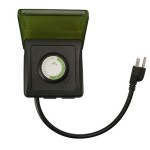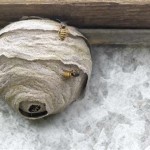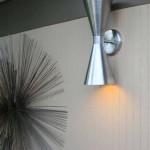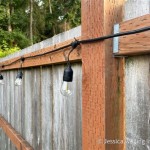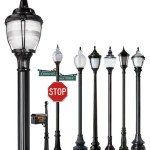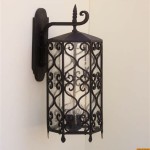How to Paint an Outdoor Glass Table Top
Painting an outdoor glass table top is a relatively straightforward project that can significantly enhance the aesthetic appeal of outdoor spaces. It offers an opportunity to personalize furniture, add color, and even protect the glass from the elements. However, proper preparation and technique are crucial for a durable and visually pleasing finish. This article will provide a comprehensive guide on how to successfully paint an outdoor glass table top, covering everything from material selection to application and curing.
The success of any painting project, especially one involving a non-porous surface like glass, hinges on meticulous preparation. This stage is not merely about cleaning the surface; it's about creating an environment where the paint can properly adhere, ensuring longevity and preventing premature peeling or chipping. Skipping or rushing through these steps can compromise the final outcome, leading to frustration and the need for rework.
Preparing the Glass Surface
The initial step is thoroughly cleaning the glass table top. Any dirt, grease, or residue will impede paint adhesion. Use a mixture of warm water and dish soap to wash the entire surface, ensuring all contaminants are removed. Abrasive cleaners should be avoided as they can scratch the glass, potentially impacting the paint's appearance. After washing, rinse the table top thoroughly with clean water to eliminate any soap residue. Allow the glass to dry completely before proceeding.
Once dry, further degreasing the surface is essential. Isopropyl alcohol is an excellent choice for this purpose. Apply it liberally to a clean, lint-free cloth and wipe down the entire glass surface. This will remove any lingering fingerprints or oils that may have been missed during the initial cleaning. Allow the alcohol to evaporate completely before moving on to the next step.
Sanding the glass, while seemingly counterintuitive, is a critical step in preparing the surface for paint. This process creates a slightly roughened texture, often referred to as a "tooth," which provides the paint with something to grip onto. Use fine-grit sandpaper, such as 220-grit, and lightly sand the entire surface of the glass. Apply even pressure to avoid creating deep scratches. The goal is not to remove material but to create microscopic imperfections that will enhance adhesion. After sanding, wipe down the glass thoroughly with a damp cloth to remove any sanding dust. Allow the surface to dry completely before proceeding.
Protecting the surrounding areas is also a vital part of the preparation process. Use painter's tape to carefully mask off any areas of the table that should not be painted, such as the frame or legs. Ensure the tape is applied securely to prevent paint from seeping underneath. Additionally, place drop cloths or plastic sheeting underneath the table to protect the ground from paint splatters or drips.
Selecting the Right Paint and Application Method
Choosing the appropriate paint and application method is paramount for achieving a durable and attractive finish on an outdoor glass table top. Not all paints are created equal, and selecting one specifically formulated for glass and outdoor use is essential. Furthermore, the application technique significantly impacts the final appearance and longevity of the paint job.
For outdoor glass surfaces, acrylic enamel paints are generally recommended. These paints offer excellent adhesion, durability, and resistance to weathering, including UV exposure and moisture. They also provide a hard, scratch-resistant finish, which is crucial for a table top that will likely encounter a fair amount of use. Ensure the chosen paint is specifically labeled for use on glass and for outdoor applications. Check the paint manufacturer's instructions regarding priming. Some paints may require a specialized glass primer for optimal adhesion.
There are several application methods that can be used to paint a glass table top, including brushing, rolling, and spraying. Each method has its advantages and disadvantages. Brushing is a straightforward method suitable for smaller projects, but it can sometimes leave brushstrokes in the finish. Rolling can provide a smoother finish than brushing, but it may not be ideal for intricate designs or edges. Spraying, using either aerosol cans or a paint sprayer, generally offers the most professional-looking finish, as it produces a smooth, even coat without brushstrokes or roller marks. However, spraying requires more careful preparation and ventilation to avoid overspray and inhalation of fumes.
Regardless of the chosen application method, applying multiple thin coats of paint is generally preferable to applying one thick coat. Thin coats dry more evenly and are less prone to running or dripping. Allow each coat to dry completely before applying the next, following the paint manufacturer's recommended drying times. For optimal durability, consider applying at least two to three coats of paint.
If using a spray paint, hold the can approximately 8-10 inches from the glass surface and apply the paint in smooth, even strokes, overlapping each stroke slightly to ensure complete coverage. Avoid holding the can in one spot for too long, as this can lead to runs or drips. If using a brush or roller, apply the paint in a consistent direction, minimizing brushstrokes or roller marks. Use a high-quality brush or roller specifically designed for use with enamel paints.
Consider the design that is desired on the glass table top. Solid colors are straightforward to implement. However, more complex designs can be achieved by using stencils or by applying multiple colors of paint. If using stencils, ensure they are securely adhered to the glass surface to prevent paint from bleeding underneath. Remove the stencils carefully after the paint has dried slightly, but before it has fully cured.
Curing and Protecting the Painted Surface
The final stage in painting an outdoor glass table top is the curing process. Curing refers to the time it takes for the paint to fully harden and achieve its maximum durability. This process is crucial for ensuring the paint's longevity and resistance to wear and tear. Additionally, taking steps to protect the painted surface will further extend its lifespan.
The paint manufacturer's instructions will specify the recommended curing time for the chosen paint. This time can vary depending on the type of paint, the environmental conditions (temperature and humidity), and the thickness of the paint layers. Generally, it is best to allow the paint to cure for at least 24-72 hours before using the table top. During this time, avoid placing any objects on the painted surface or exposing it to moisture or extreme temperatures.
After the paint has fully cured, consider applying a clear coat sealant to further protect the painted surface. A clear coat provides an additional layer of defense against scratches, UV damage, and moisture. Choose a sealant specifically designed for use on painted surfaces and for outdoor applications. Apply the sealant in thin, even coats, following the manufacturer's instructions. Allow the sealant to dry completely before using the table top.
To maintain the appearance of the painted glass table top, regular cleaning is essential. Use a mild soap and water solution to wipe down the surface as needed. Avoid using abrasive cleaners or scouring pads, as these can scratch the paint. If necessary, a glass cleaner can be used to remove stubborn stains or fingerprints.
During periods of inclement weather, such as heavy rain or snow, it is advisable to cover the table top with a protective cover. This will help to prevent water damage and protect the paint from the elements. Additionally, avoid placing hot items directly on the painted surface, as this can damage the paint. Use coasters or trivets to protect the table top from heat.
By following these guidelines, you can successfully paint an outdoor glass table top and create a beautiful and durable piece of furniture that will enhance your outdoor living space for years to come. Remember that thorough preparation, careful material selection, proper application techniques, and diligent curing are all essential for achieving the best possible results.

How To Make A Perfect Glass Patio Table Makeover

Spray Paint Underneath A Glass Top Table Patio Furniture Makeover Kitchen Tables

Diy Boho Patio Side Table Makeover Little Vintage Cottage

Reader Project Glass Top Table Makeover With Plastikote Spray Paint Ideas

Frosted Glass Table Top Windows More Easy Diy Project Porch Light Reading

How To Make A Perfect Glass Patio Table Makeover

Refresh Renew Restyle Decoupage Glass Tabletop Patio Table Redo Furniture Makeover Painted

How To Patio Table Makeover

Paint A Glass Patio Tabletop Frame In Minutes

Diy Outdoor Glass Table Makeover Hometalk
Related Posts
